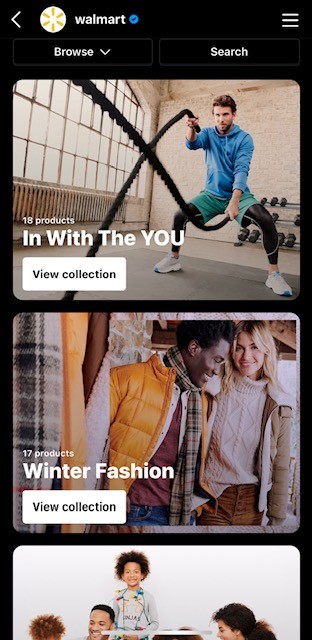2021 was a momentous year for social media. From Facebook becoming Meta to the unprecedented server outages. We saw the rise of TikTok to the growth of social commerce and digital creators. What’s past is prologue, they say, and truly some of these events and developments of the last year could shape up the social media of 2022 and beyond. Here’s my take on some of the trends in the social media world:
Short-form video
What started off as a lip-sync and dance platform, TikTok has quickly morphed into one of the most powerful social platforms in the past couple of years. The COVID pandemic forced millions of people to stay at home, and our desire to entertain ourselves at home fueled TikTok’s meteoric success. The space for short-form video content grew, and other platforms followed suit. Instagram pushed their Reels. YouTube brought out Shorts. Even Twitter experimented with Fleets.
According to most social media experts, the short-form video content is here to stay and thrive. Brands will likely find a way to not just generate brand-awareness, but gaining influence over consumers’ daily lives through creative, entertaining short-form content.
Micro-influencers and the creator economy
Over 50 million people now consider themselves creators across digital platforms. These creators have contributed an estimated 100 billion dollars to the economy.
The influencer trend has been on the rise for a while now, but the rise of smaller micro-influencer has been phenomenal. These are creators who lend their authentic voice to a brand, add value to an already tapped-in audience group or help connect to new audiences. They are at the heart of the growing online communities. They are experts, evangelists, mentors, peer reviewers, end-users and above-all they seem to be more trustworthy than a glossy mega-influencer. Almost all major platforms introduced features to help creators collaborate and monetize their work.
The brands of the future have a huge opportunity in smaller communities led by creators and micro-influencers.
Social commerce
Social commerce has quickly risen to be one of the biggest opportunities for brands. Social media has become a virtual storefront and consumers are now completing every part of their purchase journey on social media. Social platforms have been quick to cater to this trend and I am not even going to talk about metaverse. Instagram’s ‘Shop’ which allows brands to build an online store is an example:
Pinterest rolled out its Shop tab which users could explore via product pins. TikTok now partners with Shopify for their in-app e-commerce platform.
Fueled by the pandemic, the shift in consumer spending to social commerce is projected to grow to $1.6 trillion in 2025.
Better social ROI measurement
Social media marketers have always had a hard time quantifying their Return on Investment (ROI). Part of the reason for this problem is identifying how a brand defines ‘value.’ How do they measure value? Is it engagement (likes, shares, comments etc.) or is it the reach of the posts? Are leads or conversions truly more important than shares or saves?
The development of better in-platform and third-party marketing analytics tools has led to a growing confidence in the measurement of the social ROI. According to a Hootsuite survey, the majority of marketers (83%) report that they are either somewhat, very, or extremely confident in quantifying the ROI of their social efforts.
Brands are willing to look beyond social ROI as just leads or conversions. They are looking at social for brand protection and risk mitigation, and also to improve employee advocacy.
Expanding social listening and customer care teams
Social media has emerged as the first-interaction touchpoint between the consumer and the brand. Brands have increasingly started to use tools like chatbots and live chat support as an avenue to interact with the consumer:
But there’s been gradual realization of social media as a fast and convenient avenue of customer support. According to Gartner, 60% of all customer service requests will be managed via digital channels by 2023. This could lead to expansion of social customer support teams and deepening of social listening capabilities.
Social media managers are in a unique position to understand the needs and pain points of their audience, and also be right in the middle of a feedback loop that propels their marketing strategy.
Focus on brand culture
According to a Twitter survey, 25% of a customer’s purchase decision is based on a brand’s cultural involvement. Gen Z is especially vocal about the issues of social justice, environment, diversity and sustainability. They mobilize around the causes that they believe in. They value authenticity over anything else. Brands of the future will do well to ensure that the communications and experiences they provide their audience are authentic and above all, fun.
Social platforms to watch out for in 2022
LinkedIn has been one of the steady growth-drivers for Colorado State University’s social media. For a higher ed institution like ours, LinkedIn provides a great mix of students, alumni, researchers, industry leaders and the workforce. LinkedIn is a place where the theme ‘university pride’ shines bright. It’s also one platform which lets you listen deeply to your employees through ’employee posts.’ As employers the world over are dealing with the Great Resignation, LinkedIn is perhaps the only platform positioned for employee advocacy and thought leadership.
Pinterest is one of those platforms that has held its own through the years, and it’s expected to continue do so. Pinterest reported a 240% year-on-year increase in the number of organic video pins in 2021. As mentioned earlier in this post, they have already incorporated the Shop tab to pave way for in-app social commerce. In a Hootsuite survey with over 14,000 respondents, Pinterest was among the channels perceived as having the most effectiveness for reaching business goals.
Read my teammate, Kimberly’s take on the social and digital media trends to watch out for in 2022.

